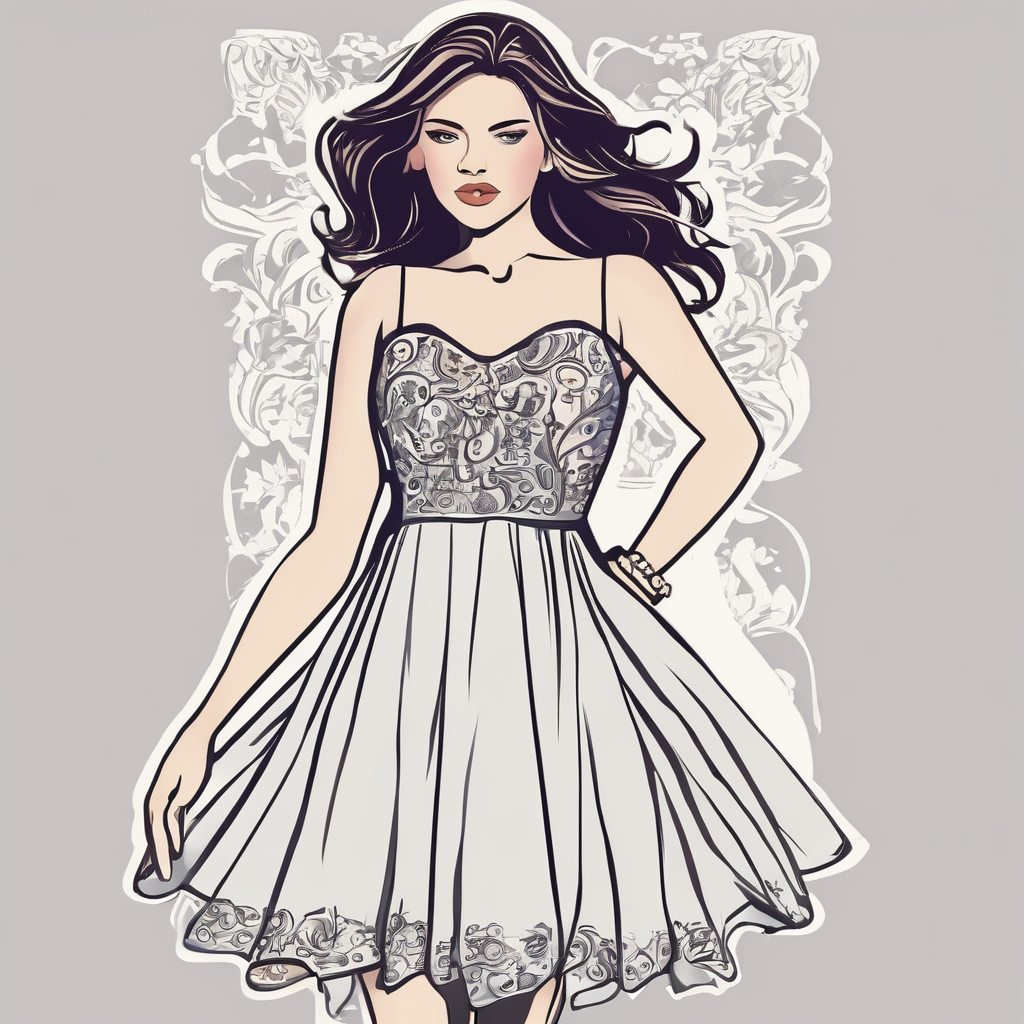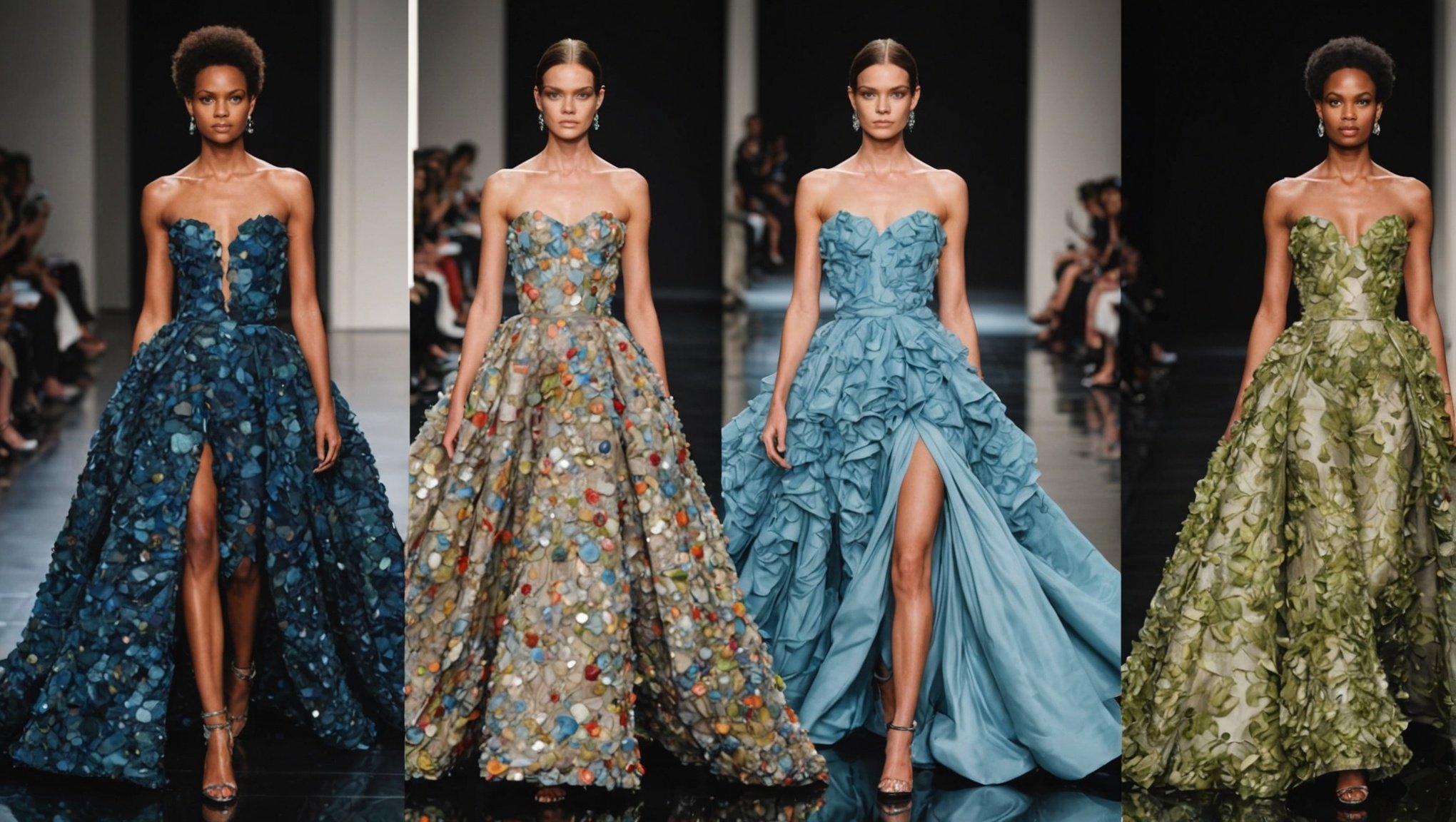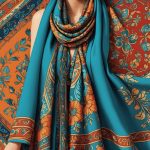In the vivid world of fashion, one question is frequently arising: Can we incorporate recycled fabrics into high fashion evening wear? With the rapidly increasing demand for sustainable and recycled materials in clothing, the answer is a resounding yes. This article will delve into the ins and outs of the recycling process, the integration of recycled materials into fashion, and the environmental benefits of these practices.
The Role of Recycling in Sustainable Fashion
Recycling plays a pivotal role in the quest for sustainability in the fashion industry. The process of transforming waste materials into new fabrics involves a complex journey from material gathering to textile production, offering a solution to the environmentally damaging practices often seen in the fashion industry.
Have you seen this : What Are the Most Fashionable Eco-Friendly Fabrics for Summer Dresses?
In the world of sustainable fashion, recycling is a critical component. It involves transforming old or unwanted clothes and other textile waste into raw materials for new products. This process significantly reduces the environmental impact of clothing production, as it lowers the demand for virgin materials and decreases the amount of waste that ends up in landfills.
The primary materials used in the recycling process are natural fibers like cotton and synthetic fibers such as polyester. These materials are collected from various sources, including unwanted clothing and industrial waste. Once collected, they are sorted, cleaned, and processed into recyclable fibers.
Also to see : How to Pair Vintage Pearl Accessories with Contemporary Outfits for a Glamorous Touch?
The Production Process of Recycled Materials
The production process of recycled materials can be likened to a fascinating journey of transformation. This process begins with the collection of waste materials, followed by their transformation into usable textiles.
Cotton and polyester play a pivotal role in this recycling process. Used clothes and other textile waste made from these materials are first collected and sorted by type and color. The sorted clothes are then cleaned and stripped down to their original fibers using various chemical processes.
These fibers are then spun into new threads. These threads are woven or knitted into fabrics, which are then used to create new clothes. During this process, much less water and fewer chemicals are used compared to the production of virgin fabrics. Plus, less waste is produced, and fewer resources are consumed, contributing to an overall more sustainable production process.
Incorporating Recycled Materials into High Fashion
The integration of recycled materials into high fashion is a testament to the industry’s growing consciousness about its environmental impact. The artistry of fashion designers is clearly demonstrated as they skillfully incorporate these materials into high fashion evening wear.
Numerous brands are now showing a marked preference for recycled fabrics in their collections. They are not only using these fabrics for casual and day wear but are also incorporating them into glamorous evening wear. These brands are proving that sustainability and style can indeed go hand in hand.
Using recycled fabrics does not mean compromising on quality or aesthetics. With advances in technology, these fabrics can be made to look and feel just as luxurious as their virgin counterparts. They can be beautifully dyed, printed, and embellished, making them ideal for high fashion creations.
The Environmental Impact of Recycled Fashion
The use of recycled materials in fashion is not merely a trend; it is a necessity for the environment. The fashion industry is one of the largest polluters globally, largely due to its reliance on virgin materials and its massive water and chemical usage.
Each year, thousands of tons of clothes end up in landfills, while the production of new clothes consumes vast amounts of water and releases harmful chemicals into the environment. By recycling materials, these harmful effects can be significantly mitigated.
Recycling textiles reduces the need for virgin materials, thereby preserving natural resources. It also significantly lowers water and chemical usage during the production process, making it a far more environmentally friendly option.
Recycled fashion is a powerful tool in the fight against environmental degradation. It not only helps conserve resources and reduce pollution but also promotes a more sustainable and responsible consumption model.
While the road to sustainable fashion is still long, the integration of recycled fabrics into high fashion evening wear is a step in the right direction. By embracing recycled fabrics, the fashion industry can continue to dazzle us with its creativity and glamour, while also showing respect for our planet.
Innovation in Recycled Materials for High Fashion
Recycled materials have been making a splash in the fashion world, and their integration into high fashion evening wear is no exception. Innovations in recycling technology have made it possible to create high-quality materials that can compete with virgin fabrics in terms of aesthetics and feel.
The recycling process, particularly chemical recycling, has made it possible to transform materials like recycled polyester from plastic bottles, or discarded textiles made of organic cotton, into new, usable fabric. The result is a sustainable fabric that not only meets the standards of high fashion but also lessens the environmental impact of clothing production.
In the case of polyester, a common synthetic fabric, the recycling process can be quite complex. Plastic bottles are shredded, cleaned, and then melted down to produce recycled polyester fibers. These fibers are then spun into yarn, which is woven or knitted into new fabric. This process, often referred to as a closed loop production process, significantly reduces the need for new petroleum in polyester production, thereby reducing the carbon footprint of the fabric.
Fashion brands have been quick to adopt these sustainable practices. Creations made from recycled polyester or organic cotton have graced the runways of fashion weeks worldwide, proving that recycled materials can indeed be part of high fashion, and that a glamorous evening gown can be as eco-friendly as it is beautiful.
Conclusion: A Sustainable Future for High Fashion
The use of recycled materials in high fashion evening wear is an encouraging testament to the potential for sustainability in the fashion industry. This integration is not just a passing fad; it’s a response to a growing awareness of the environmental impact of fast fashion and a commitment to creating a more sustainable future.
The industry is increasingly turning to sustainable materials, such as recycled polyester and organic cotton, as well as implementing closed loop production processes. These practices help conserve resources, reduce waste, and mitigate the negative impacts on the environment associated with traditional sourcing and production methods.
Moreover, the OEKO-TEX certifications, which test for harmful substances in textiles, are increasingly being sought after by fashion brands. This ensures that not only the production process is sustainable, but also that the end product is free of harmful chemicals.
The fashion industry is a powerful force and its embrace of sustainable and recycled materials could have far-reaching effects. As consumers, we have a role to play in this change. By choosing pieces made from recycled materials, we can help support the efforts of the fashion industry to become more sustainable and less polluting.
While there is still a long way to go, the incorporation of recycled fabrics into high fashion evening wear is a promising step forward. It shows that the industry can evolve, adapt and innovate for the betterment of our planet. In the face of textile waste and the environmental issues that the industry poses, solutions like these give us hope for a more sustainable future.











